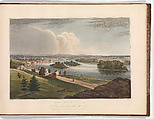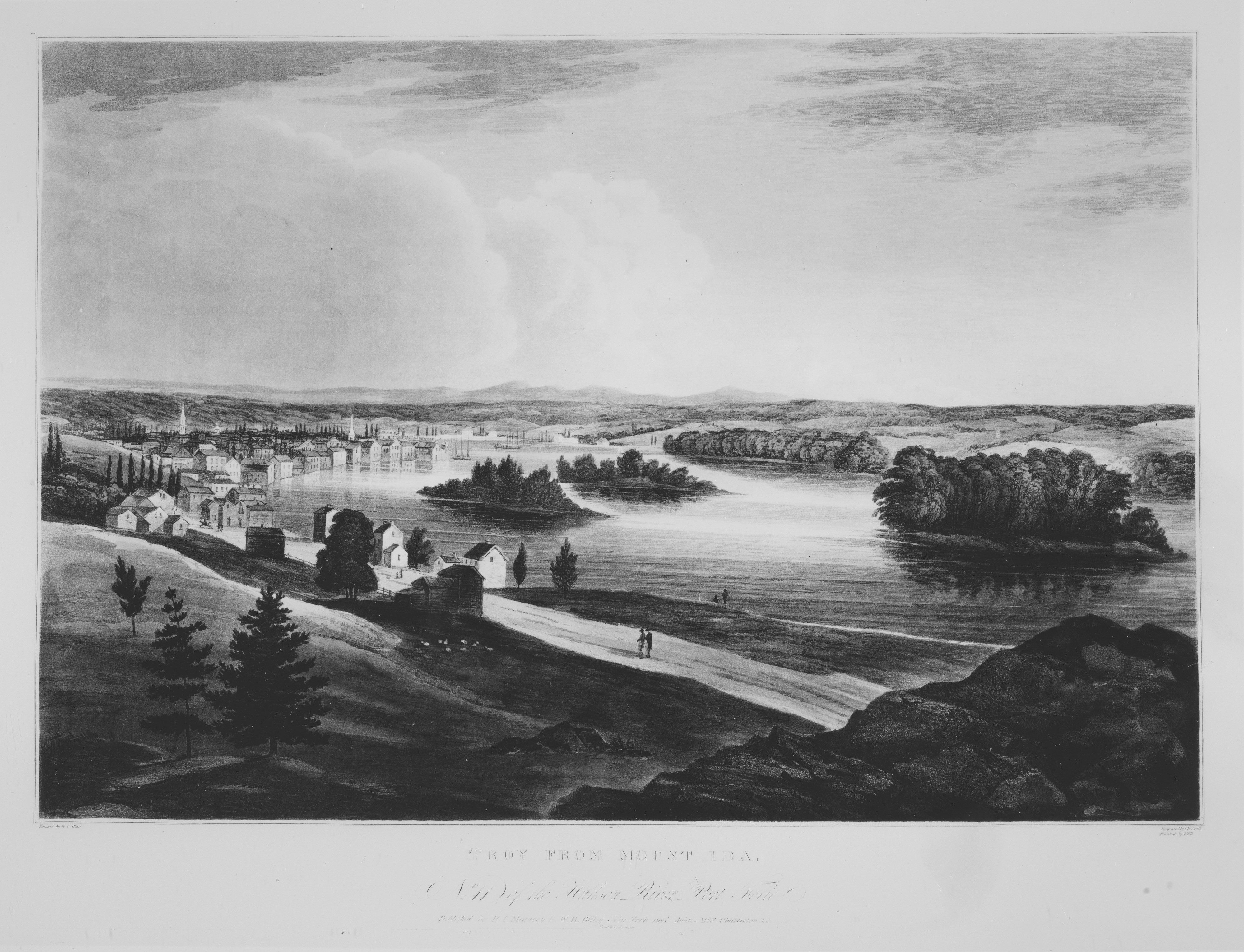Troy from Mount Ida (No. 11 of The Hudson River Portfolio)
Not on view
Text published with this image tells us that, "the city of Troy is delightfully situated on the east shore of the Hudson, about six miles north of Albany, and near the head of sloop navigation." It then describes the town's rapid growth as a trading center with a population over four thousand. The vista seen here, "embraces a most extensive and enchanting view; bounded on the south by the towering mountains of Katskill...The road, in the foreground...runs northward to Sandy-Hill, and Lakes George and Champlain." The print comes from the Hudson River Portfolio, a monument of American printmaking produced through the collaboration of artists, a writer, and publishers. In the summer of 1820, the Irish-born Wall toured and sketched along the Hudson, then painted a series of large watercolors. Prints of equal scale were proposed—to be issued to subscribers in sets of four—and John Rubens Smith hired to work the plates. Almost immediately, Smith was replaced by the skilled London-trained aquatint engraver John Hill, who finished the first four plates, and produced sixteen more by 1825. Over the next decade, the popularity of the Portfolio stimulated new appreciation for American landscape, and prepared the way for the Hudson River School.
This image cannot be enlarged, viewed at full screen, or downloaded.
This artwork is meant to be viewed from right to left. Scroll left to view more.




